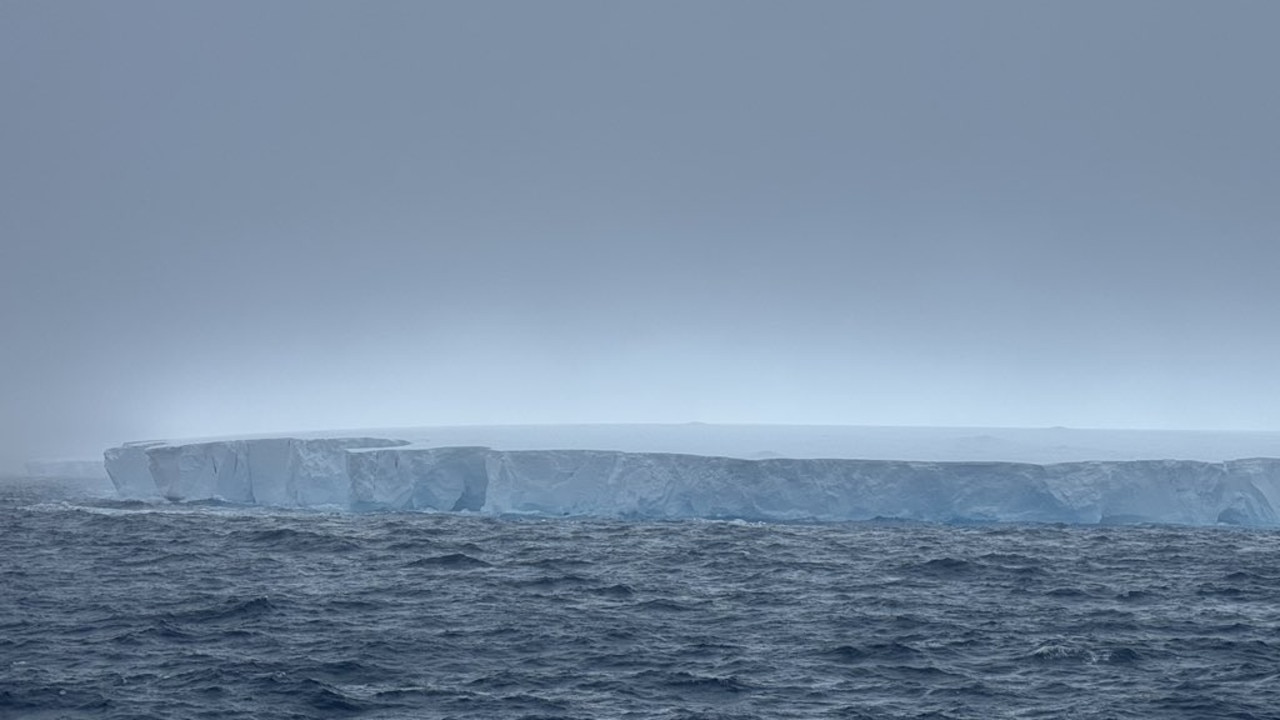A23a: World’s largest iceberg moving at speed
A monster iceberg thicker than Australia’s tallest building has broken free from Antarctica and begun floating across the ocean.

The world’s largest iceberg has broken apart from Antarctica and begun drifting across the Southern Ocean.
The iceberg, named A23a, measures 3900 square kilometres — about twice the size of London — and has an average thickness of 280 metres.
It is some 400 metres thick at its thickest point. By contrast, Australia’s tallest building, the Q1 on the Gold Coast, is just 322 metres tall.
Scientists estimate A23a has a staggering mass of just under one trillion tonnes.


The iceberg calved from the Antarctic coast in 1986 and became stuck in shallow bottom mud that held it in place for more than three decades.
It loses about 2.5 metres in thickness each year and, earlier this year, became thin enough to break free from the mud and start drifting at greater speed beyond its icy home.


Researchers say A23a is now at a critical point in its journey, with its next few movements likely to determine its future path through the Southern Ocean.
The berg has reached the top of the Antarctic Peninsula, where various fast-moving waters converge. How it interacts with these streams, as well as the westerly winds that dominate that part of the world, will control where A23a goes next.
It likely will progress down “iceberg alley” — a path that directs many bergs towards the island of South Georgia in the South Atlantic Ocean — though there are several other routes it could take.
We even saw a couple of groups of penguins from very far away that were hanging out on top of the berg! The people who saw them & the ornithologist got into arguments about whether they were penguins bc he didn’t think they could get up there. My pictures settled the debate. 💀 pic.twitter.com/hmCOKhMpCd
— Gretchen Winter, MD 🌼 (Warning: Feral) (@gretchemaben) December 10, 2023
An iceberg of this size is likely to have a huge impact on its environment.
“They’re responsible for very deep mixing of seawater,” Mike Meredith, from the British Antarctic Survey, told the BBC.
“They churn ocean waters, bringing nutrients up to the surface, and, of course, they also drop a lot of dust.
“All this will fertilise the ocean. You’ll often see phytoplankton blooms in their wake.”






